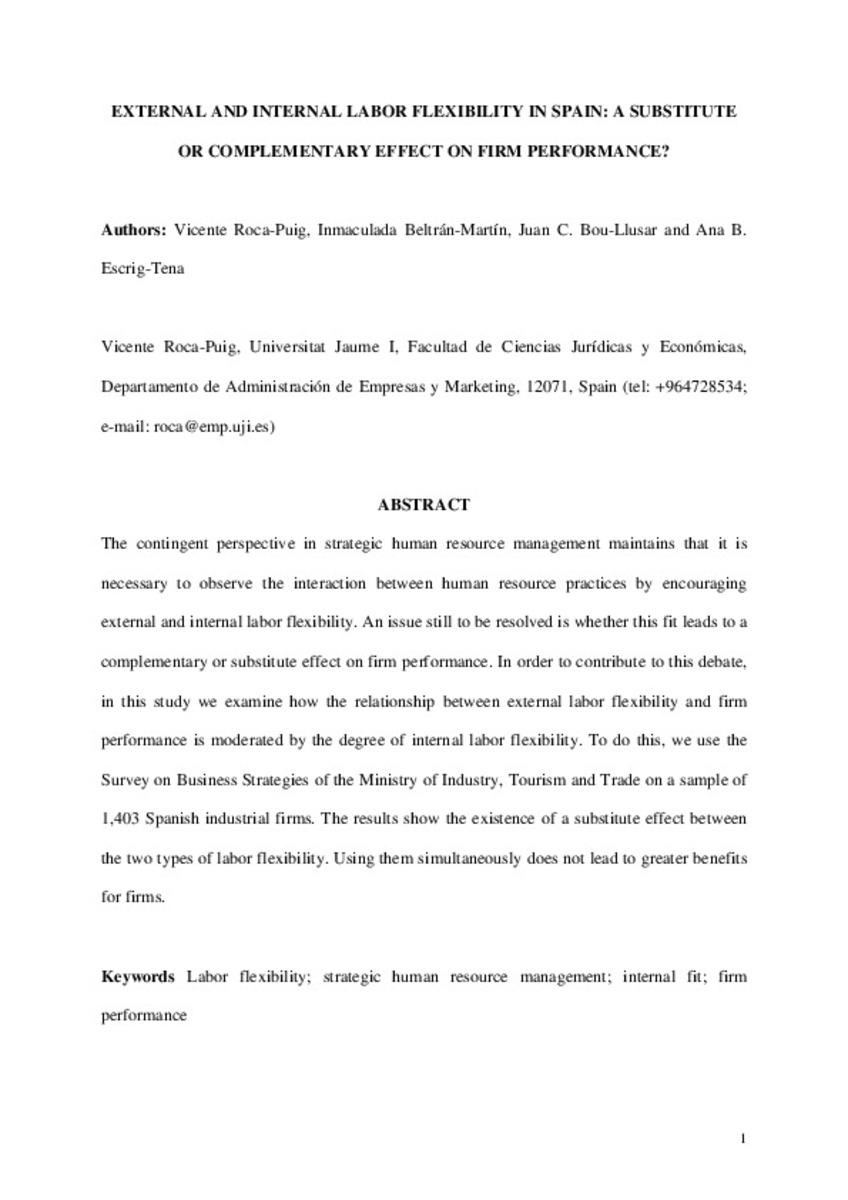Mostrar el registro sencillo del ítem
External and internal labour flexibility in Spain: a substitute or complementary effect on firm performance?
| dc.contributor.author | Roca-Puig, Vicente | |
| dc.contributor.author | Beltrán-Martín, Inmaculada | |
| dc.contributor.author | Bou-Llusar, Juan Carlos | |
| dc.contributor.author | Escrig-Tena, Ana B. | |
| dc.date.accessioned | 2010-04-01T11:59:00Z | |
| dc.date.available | 2010-04-01T11:59:00Z | |
| dc.date.issued | 2008 | |
| dc.identifier.issn | 09585192 | |
| dc.identifier.uri | http://hdl.handle.net/10234/10515 | |
| dc.description.abstract | The contingent perspective in strategic human resource management maintains that it is necessary to observe the interaction between human resource practices by encouraging external and internal labor flexibility. An issue still to be resolved is whether this fit leads to a complementary or substitute effect on firm performance. In order to contribute to this debate, in this study we examine how the relationship between external labor flexibility and firm performance is moderated by the degree of internal labor flexibility. To do this, we use the Survey on Business Strategies of the Ministry of Industry, Tourism and Trade on a sample of 1,403 Spanish industrial firms. The results show the existence of a substitute effect between the two types of labor flexibility. Using them simultaneously does not lead to greater benefits for firms | |
| dc.format.extent | 20 p. | |
| dc.language.iso | eng | |
| dc.publisher | Routledge | |
| dc.relation.isPartOfSeries | International journal of human resource management; vol. 19, núm. 6 | |
| dc.rights.uri | http://rightsstatements.org/vocab/CNE/1.0/ | * |
| dc.subject | Labor flexibility | |
| dc.subject | Strategic human resource management | |
| dc.subject | Internal fit | |
| dc.subject | Firm performance | |
| dc.subject.other | Empreses -- Direcció i administració | |
| dc.subject.other | Organització industrial | |
| dc.title | External and internal labour flexibility in Spain: a substitute or complementary effect on firm performance? | |
| dc.type | info:eu-repo/semantics/article | |
| dc.rights.accessRights | info:eu-repo/semantics/openAccess |
Ficheros en el ítem
Este ítem aparece en la(s) siguiente(s) colección(ones)
-
EMP_Articles [450]







